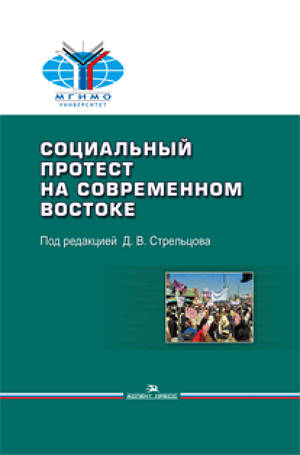Book
The role of the Islamic factor in the sociology-political development of Arab countries and its evolution in terms of the Syrian uprising. (90th XX - beginning of XXI.)
Москва, 2015, 124 p.
An author investigates the main military factions that struggle against Assad. He exams their history, ideological origins and perspectives of transformation in future Syria. A main attention the author pays to studies salafi, Muslim-brothers and Sufi civil and military movements especially in Syria.
A new book on the role of political Islam and Islamists in the Arab uprisings. "The role of the Islamic factor in the socio-political development of Arab countries and its evolution in terms of the Syrian uprising. (90th XX - beginning of XXI .)" The book by the Senior Researcher, Institute of Oriental Studies Vladimir Ahmedov devoted to complex research of basic social and political processes in the Arab countries of the Middle East in the last decade of the XX century and the beginning of the XXI century. The author examines in detail the historical causes and socio-political conditions sweeping the Middle East region of Arab unrest. On the broad historical base the author discharges a analysis of the peculiarities of socio-political and ideological development of the Arab countries in the so-called "Arab Spring." The basic directions and tendencies of their evolution in the watershed for most countries in the region a time when many Arab countries have tried to make the transition from an authoritarian model of governance to a more liberal. A detailed investigation is the place of various Islamist groups in the conditions of the Arab uprisings, their role in citizenship, politics and armed struggle in the Arab countries, especially the example of Syria. The estimation of the main characteristics of Islamist movements and djihadists in Syria, discussed the nature of their relationship with the political regime, the army and other units of the Syrian armed resistance. An attempt to forecast the possible ways of their evolution in the political space of Syria and the Middle East as a whole. Particular attention is paid to the study of the nature and character of the political regimes of the Arab countries of the Middle East, the prospects of stability in the face of Islamist movements and djihadists in Syria, their ideological and political views. In view of the increased activity in recent years, various kinds of Islamic organizations and their rivalry with the secular character of the national movements for political leadership in the region, the author dwells on enough research on the role of ethno-national and religious factors in the political development of the region. Contents Introduction Part I. Features of the socio-political, social and ideological development of the Arab countries of the Middle East on the eve of the Arab uprisings.
Content
РУССКАЯ ВЕРСИЯ: Роль исламского фактора в общественно-политическом развитии арабских стран Ближнего Востока и его эволюция в условиях сирийского восстания











